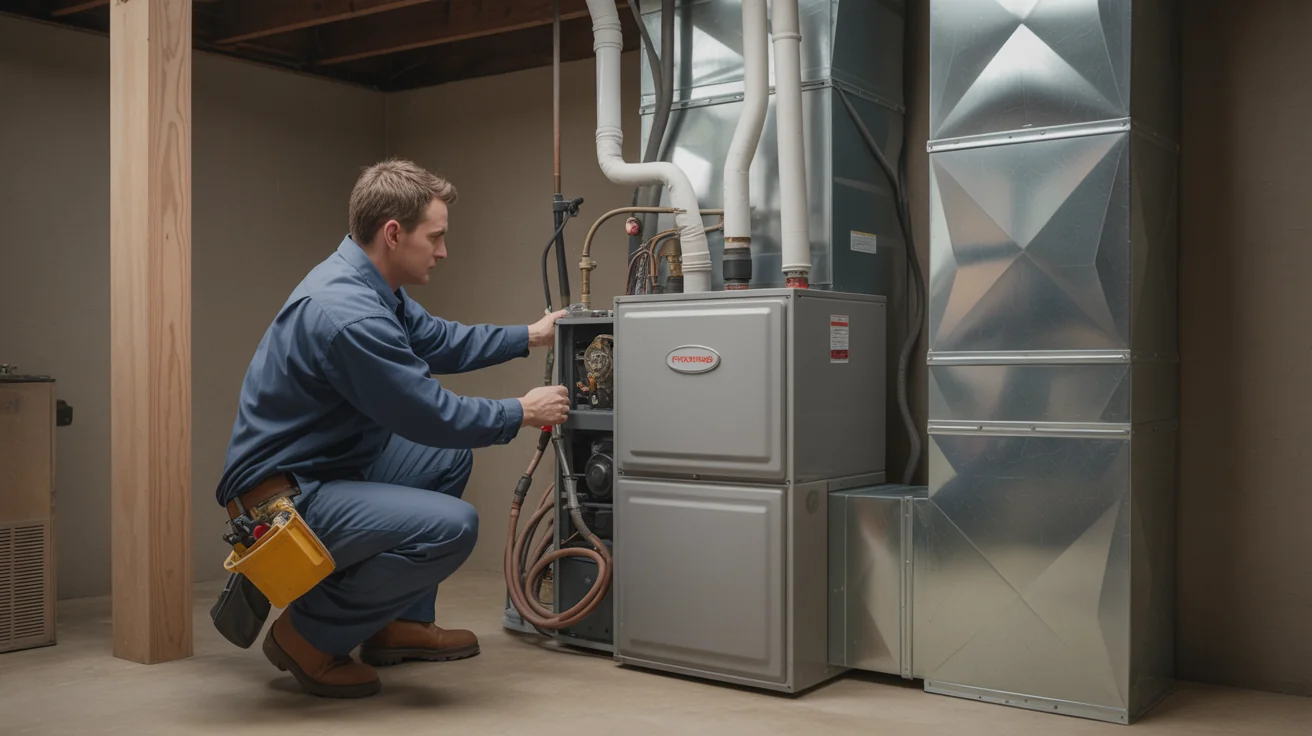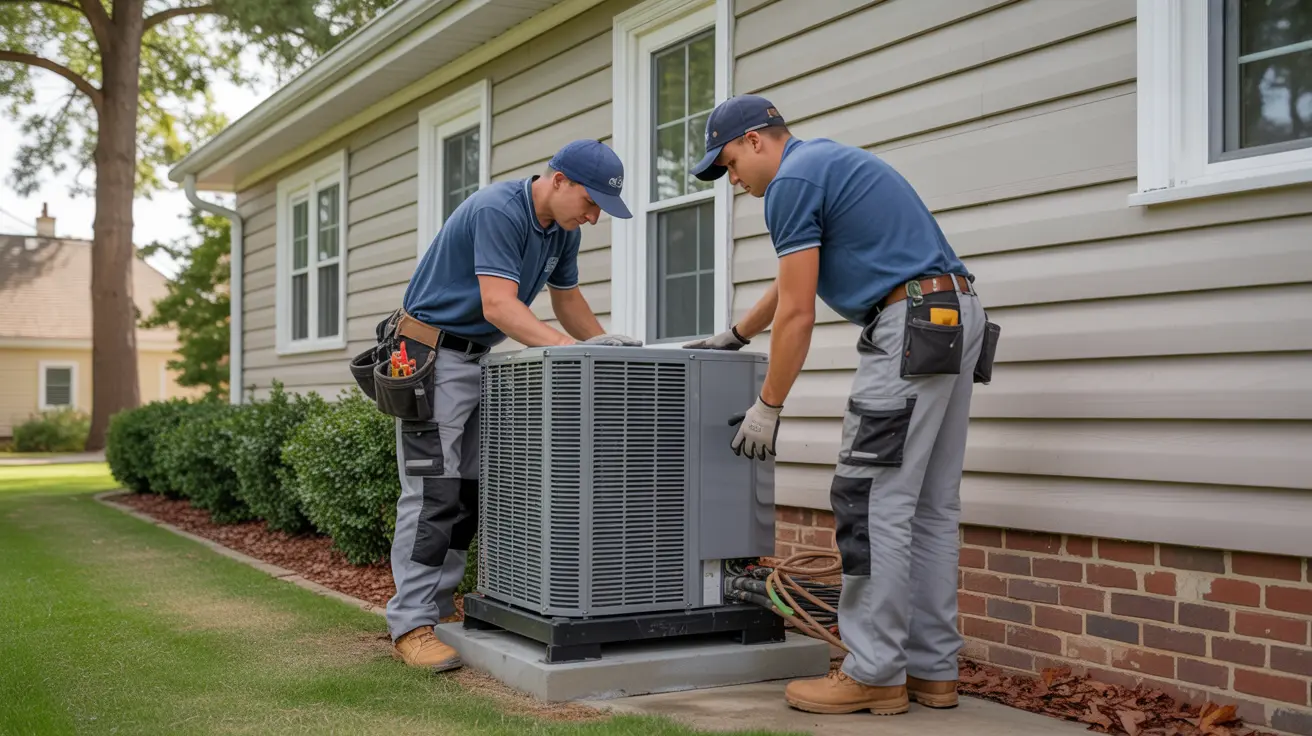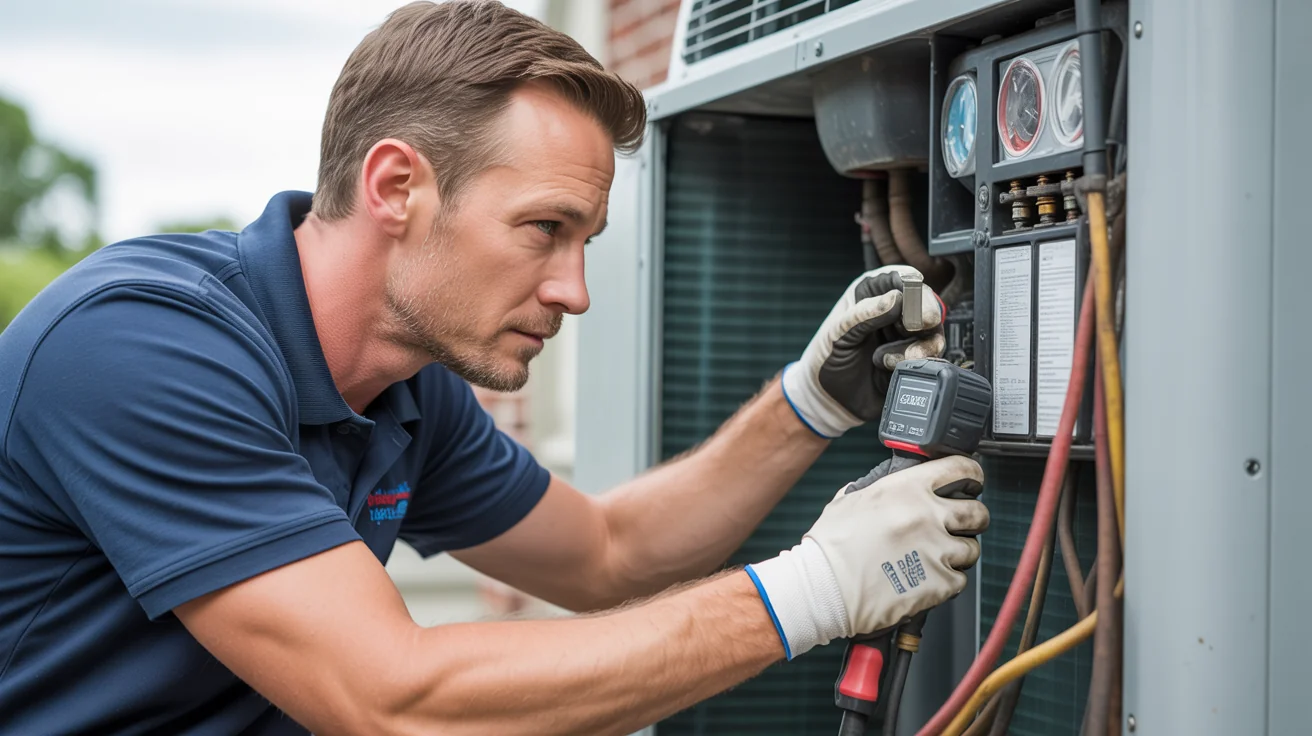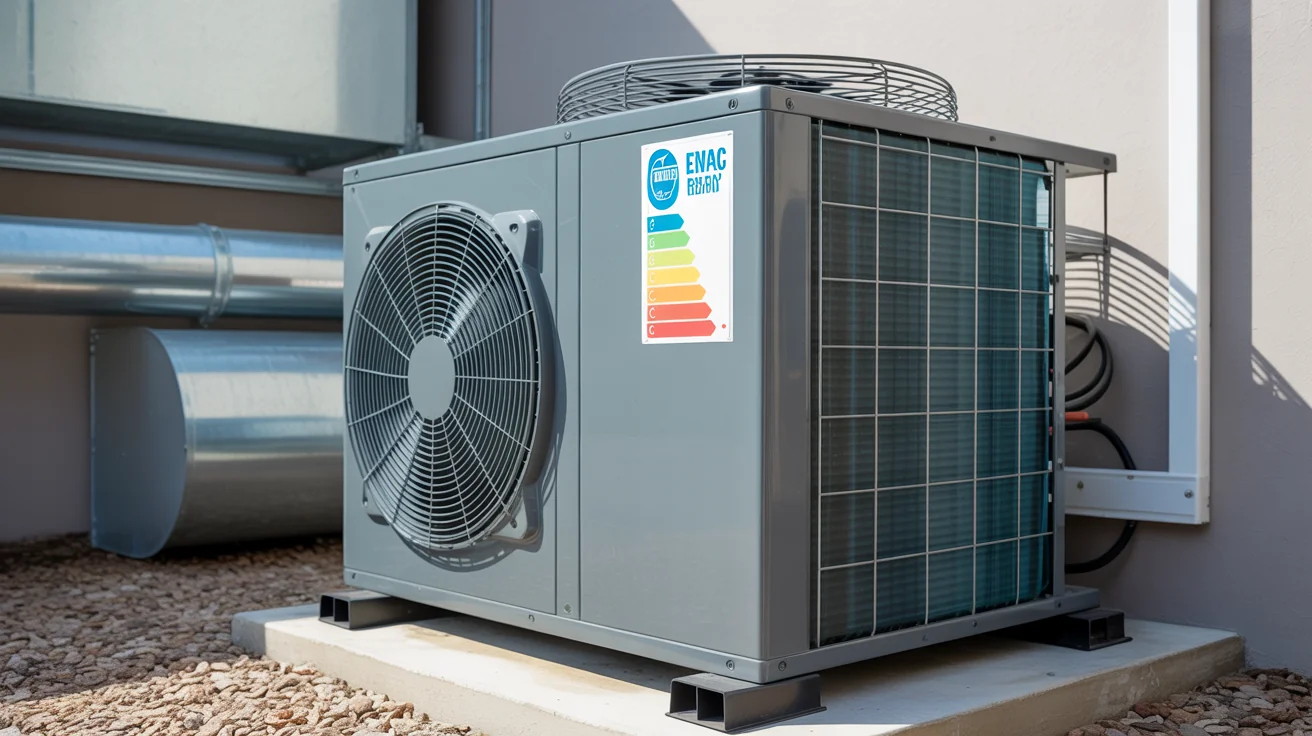Winter HVAC Preparation for North Texas: Complete Seasonal Transition Guide
Comprehensive guide to preparing your HVAC system for North Texas winter. Expert checklist, furnace startup procedures, and emergency preparedness to make sure reliable heating throughout the season.

- Why “Mild” North Texas Winters Destroy More Heating Systems
- The Perfect Storm of Equipment Failure
- Complete North Texas Winter HVAC Preparation Checklist
- Advanced Winter Preparation Strategies
- Humidity Control for Winter Comfort
- Emergency Preparedness for North Texas Weather Events
- Professional vs. DIY Winter Preparation
- What Homeowners Can Safely Handle
+ 24 more sections below...
- Why “Mild” North Texas Winters Destroy More Heating Systems
- The Perfect Storm of Equipment Failure
- Complete North Texas Winter HVAC Preparation Checklist
- Advanced Winter Preparation Strategies
- Humidity Control for Winter Comfort
- Emergency Preparedness for North Texas Weather Events
- Professional vs. DIY Winter Preparation
- What Homeowners Can Safely Handle
+ 24 more sections below...
Why “Mild” North Texas Winters Destroy More Heating Systems
After 15 years responding to emergency heating calls, I can tell you something that surprises most people: North Texas has more heating system failures per capita during first cold snaps than Minnesota or Wisconsin.
Wait, what? How does Texas beat Minnesota for heating failures?
Because Minnesota families know their furnaces intimately. Those systems run eight months a year, problems get caught early, maintenance is routine. Our systems take eight-month vacations, collecting dust, developing corrosion, and aging in silence. Then we expect them to fire up perfectly when it drops from 75 to 25 degrees overnight.
It doesn’t work that way.
The Perfect Storm of Equipment Failure
Our systems work harder during one Texas summer than most equipment works in three years anywhere else. Seven months of battling 105-degree heat, thermal cycling between scorching afternoons and (relatively) cool nights, running at maximum capacity for months straight.
Then complete hibernation. Dust settles on everything. Electrical connections that loosened during summer stress sit untested. Components that were marginally failing in October become completely failed by January.
When that first cold snap hits - when we go from shorts weather to needing serious heat in twelve hours - we expect perfection from systems that have been sleeping for half a year.
I’ve replaced more heat exchangers, ignition systems, and blower motors during North Texas first freeze warnings than I did during entire heating seasons when I worked in Colorado.
What Makes North Texas Uniquely Brutal:
- Temperature drops that would make weather forecasters in other states call in sick (70°F to 25°F in one day)
- Ice storms that turn your outdoor unit into a frozen sculpture
- Humidity swings that create perfect conditions for corrosion and electrical failures
- Weather so unpredictable you might need heat Tuesday and AC on Friday
Equipment Aging Patterns:
- Heat exchangers develop cracks during summer heat stress
- Gas valves stick from lack of use during cooling season
- Ignition systems fail from dust accumulation
- Blower motors struggle with winter startup after summer fatigue
Complete North Texas Winter HVAC Preparation Checklist
Phase 1: Safety and Initial Inspection (30 minutes)
Critical Safety Steps:
- Turn off electrical power at the main panel and unit disconnect
- Shut off gas supply at the furnace gas valve (quarter turn perpendicular)
- Check for gas odors around the unit and gas lines
- Inspect for physical damage from summer storms or settling
- Verify adequate clearance around unit (3 feet minimum)
Visual Inspection Checklist: Examine the heat exchanger for visible cracks or rust spots that could indicate dangerous failure conditions. Check gas line connections carefully for corrosion or damage that could lead to leaks. Inspect electrical connections for burns, melting, or looseness that could cause system failure or fire hazards. Verify vent pipe integrity and proper slope to ensure safe combustion gas removal. Confirm the condensate drain is clear and functioning to prevent water damage and humidity problems.
Phase 2: Filter and Airflow Systems (45 minutes)
Filter System Overhaul: The most critical winter prep step is filter system optimization. Summer operation clogs filters with allergens, dust, and debris that restrict crucial heating airflow.
Filter Replacement Protocol:
- Remove and photograph old filter orientation
- Measure exact dimensions - don’t assume standard sizing
- Choose appropriate MERV rating (8-11 for North Texas conditions)
- Install with airflow direction arrow pointing toward unit
- Mark installation date on filter frame
Ductwork Inspection: Check all visible ductwork for separation or damage that may have occurred from settling or thermal expansion. Seal any gaps with appropriate duct mastic or tape to prevent heated air loss and maintain efficiency. Verify register dampers are open in heating zones to ensure proper airflow distribution. Remove any summer blockages or seasonal decorations that could restrict airflow and reduce system performance.
Phase 3: Furnace Startup and Testing (60-90 minutes)
Systematic Furnace Startup Process:
Step 1: Initial Systems Check Restore electrical power at the main panel and disconnect switch to energize the system controls. Set the thermostat to “OFF” position initially to prevent unexpected startup during preparation. Turn the gas supply back on by rotating the valve parallel to the pipe to restore fuel supply. Allow 5 minutes for gas to reach the appliance and stabilize pressure before proceeding with startup.
Step 2: Thermostat Programming Install new batteries in programmable thermostats to ensure reliable operation throughout the heating season. Set to “HEAT” mode with temperature 5°F above current room temperature to initiate the first heating cycle. Verify the digital display shows current temperature accurately, as sensor calibration affects system performance. Test fan setting on “AUTO” position to ensure proper blower operation during heating cycles.
Step 3: First Heat Cycle Listen for the ignition sequence, which should begin within 60 seconds of the thermostat calling for heat. Normal sequence includes draft motor startup, gas valve click, ignition activation, and main burner lighting in order. Observe the initial heating cycle for 10-15 minutes to ensure stable operation and proper cycling. Check that warm air begins flowing from registers within 3-5 minutes of burner ignition.
Step 4: Performance Verification Measure temperature differential across the heat exchanger, with 35-70°F rise being normal for residential systems. Verify all registers are producing warm airflow with consistent temperature throughout the home. Check that the system cycles off properly when the thermostat temperature is reached, indicating proper control operation. Listen carefully for unusual noises during operation that could indicate mechanical problems requiring attention.
Phase 4: Heat Pump Specific Preparation (Texas Climate Advantage)
Heat pumps are highly effective in North Texas winter conditions, but require specific preparation:
Heat Pump Winter Optimization: Clean the outdoor coil thoroughly to remove summer debris that reduces heat transfer efficiency. Check refrigerant levels, as winter efficiency depends on proper refrigerant charge for optimal performance. Test defrost cycle operation during cold weather simulation to ensure ice removal functions properly. Verify auxiliary heat staging operates correctly for temperatures below 35°F when heat pump efficiency drops. Inspect outdoor unit levelness and mounting stability to prevent vibration and operational issues.
Auxiliary Heat System Check: Test electric heating elements for proper operation by monitoring amp draw and heating output. Verify staging sequence operates correctly with heat pump first and auxiliary heat as backup only. Check electrical connections for corrosion or burning that could cause failure or safety hazards. Confirm proper thermostat settings for efficient operation, avoiding unnecessary auxiliary heat usage.
Advanced Winter Preparation Strategies
Related: Winter Preparation
Humidity Control for Winter Comfort
The North Texas Winter Humidity Challenge: Winter heating dramatically reduces indoor humidity levels, often dropping below 20% during extended heating periods. This creates comfort issues and increases static electricity problems.
Humidity Optimization Strategy:
- Install whole-home humidifier for consistent comfort
- Target 30-40% relative humidity during winter months
- Monitor humidity levels to prevent over-humidification and condensation
- Clean and service existing humidifiers before heating season
Emergency Preparedness for North Texas Weather Events
Ice Storm Preparation:
- Install backup power source for heating system operation
- Ensure 72-hour emergency heating plan for power outages
- Stock replacement filters and basic repair supplies
- Create emergency heating zone plan for large homes
Preventive Maintenance Schedule:
- September: Initial system inspection and cleaning
- October: Full furnace startup and testing
- December: Mid-season performance check and adjustment
- February: End-season assessment and spring preparation planning
Professional vs. DIY Winter Preparation
What Homeowners Can Safely Handle
Recommended DIY Tasks:
- Filter replacement and basic cleaning
- Thermostat battery replacement and programming
- Visual inspection of accessible components
- Airflow verification and register adjustment
- Basic startup observation and testing
When to Call Professional Service
Professional Service Required For:
- Gas line inspection and leak testing
- Heat exchanger crack detection and safety verification
- Electrical system testing and component replacement
- Combustion analysis and efficiency testing
- Complex diagnostic procedures and repairs
Professional Winter Prep Service Includes:
- Complete gas system safety inspection
- Heat exchanger visual and electronic inspection
- Combustion analysis and efficiency testing
- Electrical connection tightening and testing
- Blower motor lubrication and belt adjustment
- Vent system inspection and cleaning
- Thermostat calibration and programming optimization
Regional Considerations for North Texas Cities
Dallas-Fort Worth Metro Specific Challenges
Urban Heat Island Effects:
- Higher summer stress on equipment extends into fall transition
- Air quality concerns require more frequent filter changes
- Electrical grid stress during peak demand periods
Recommended Preparation Timeline:
- Early September: Initial inspection and planning
- Late September: Filter replacement and basic maintenance
- Early October: Professional service and startup
- Mid October: System testing and optimization
Frisco, Plano, and Allen Winter Preparation
Serving Frisco and surrounding areas. Serving Plano and surrounding areas. Serving Allen and surrounding areas.
Newer Home Advantages:
- More efficient HVAC systems require less intensive preparation
- Better insulation reduces heating system stress
- Smart thermostat integration simplifies winter programming
Focus Areas:
- Warranty maintenance compliance for newer systems
- Smart home integration optimization for winter efficiency
- Preventive care to maintain warranty coverage
McKinney, Prosper, and The Colony Considerations
Serving McKinney and surrounding areas. Serving Prosper and surrounding areas. Serving The Colony and surrounding areas.
Mixed Housing Stock Challenges:
- Older homes require more intensive preparation and inspection
- Varying system types need customized preparation approaches
- Rural and semi-rural areas may have unique challenges (propane systems, well water)
Preparation Strategy:
- Comprehensive inspection for older systems
- Modernization opportunities during preparation process
- Rural-specific considerations (propane system service, backup power)
Cost-Benefit Analysis of Winter Preparation
Investment vs. Savings Breakdown
Professional Winter Prep Service Investment: $149-299
- Complete safety inspection and testing
- Performance optimization and adjustment
- Early problem detection and prevention
- Winter efficiency maximization
Potential Cost Avoidance:
- Emergency service calls: $350-850 per incident
- Component replacement during peak season: 30-50% premium pricing
- Energy waste from inefficient operation: $200-500 per season
- System damage from neglected maintenance: $1,200-3,500
Return on Investment: 300-800% annual return through:
- Reduced energy consumption (15-25% improvement)
- Avoided emergency service costs
- Extended equipment life (3-5 additional years)
- Improved comfort and system reliability
Seasonal Transition Best Practices
Timing Your Winter Preparation
Optimal Preparation Schedule for North Texas:
September (Early Season):
- Initial planning and assessment
- Schedule professional service appointments
- Order replacement filters and supplies
- Begin system transition from cooling to heating mode
October (Pre-Season):
- Complete professional service and inspection
- Perform first heating system tests
- Optimize thermostat programming for heating season
- Address any identified issues before peak demand
November (Season Start):
- Monitor system performance during first cold snaps
- Fine-tune settings based on actual performance
- Complete any remaining preparation tasks
- Prepare emergency heating plans
System Transition Strategies
Smooth Cooling-to-Heating Transition:
- Gradual thermostat adjustment - avoid dramatic temperature changes
- Monitor initial heating cycles for performance issues
- Address humidity changes with proper humidification
- Optimize airflow patterns for heating distribution
Energy Efficiency Maximization for Winter
Related: Energy Efficiency
Thermostat Programming for Texas Winter
Optimal Winter Settings for North Texas: Occupied periods: 68-70°f for comfort and efficiency balance. Unoccupied periods: 62-65°f to maintain system protection. Sleep settings: 65-67°f for comfort without waste. Vacation settings: 55-60°f minimum to prevent freeze damage.
Heat Pump Specific Programming:
- Avoid large temperature setbacks (more than 3°F) to prevent auxiliary heat usage
- Use gradual temperature changes to maintain heat pump efficiency
- Program seasonal changeover temperatures (usually 35-40°F)
Insulation and Air Sealing Impact
Winter Efficiency Improvements:
- Attic insulation upgrade can reduce heating costs by 20-30%
- Air sealing reduces heating load by 15-25%
- Window treatments and weatherstripping provide 5-10% savings
- Whole-house air sealing and insulation upgrades offer 30-50% energy reduction
Troubleshooting Common Winter Startup Issues
Related: Troubleshooting
Furnace Won’t Start Issues
Most Common North Texas Winter Startup Problems:
1. Thermostat Issues (40% of service calls):
- Dead batteries in programmable thermostats
- Incorrect mode settings (still on “COOL” mode)
- Programming lost during power outages
- Thermostat location affected by summer heat damage
Troubleshooting Steps:
- Replace batteries and check settings
- Check circuit breakers and electrical connections
- Verify thermostat calling for heat with temperature setting
- Test thermostat with manual override
2. Ignition System Problems (35% of service calls):
- Pilot lights extinguished during summer shutdown
- Electronic ignition systems clogged with debris
- Gas valve issues from lack of use
- Flame sensors dirty from dust accumulation
Troubleshooting Steps:
- Check gas supply and pilot light status
- Clean flame sensor with fine steel wool
- Verify proper gas pressure at appliance
- Listen for proper ignition sequence timing
3. Airflow Problems (25% of service calls):
- Clogged filters from summer operation
- Blocked vents and registers
- Ductwork separation or damage
- Blower motor issues from summer stress
Troubleshooting Steps:
- Replace air filter immediately
- Check all vents and registers for blockages
- Verify ductwork integrity and connections
- Test blower motor operation and speeds
Emergency Heating Strategies for North Texas
Power Outage Heating Solutions
Generator-Powered Heating:
- Size generator appropriately for furnace electrical needs (typically 3,500-7,500 watts)
- Install proper transfer switch for safe operation
- Maintain generator fuel supply during winter months
- Test generator operation monthly during heating season
Alternative Heating Methods:
- Fireplace preparation and chimney cleaning
- Space heater safety and electrical needs
- Emergency heating zones for large homes
- Propane heater backup options (with proper ventilation)
Freeze Protection Strategies
Preventing System Freeze Damage:
- Maintain minimum 55°F temperature during extended absences
- Insulate exposed pipes and equipment
- Know location of main water shut-off valve
- Plan for heating system failure scenarios
Professional Service Scheduling and Selection
Choosing the Right Service Provider
Key Qualifications to Verify:
- NATE (North American Technician Excellence) certification
- State HVAC contractor licensing (Texas TACLA license)
- Manufacturer certifications for major equipment brands
- Local business reputation and customer reviews
- Insurance coverage and warranty policies
Service Package Evaluation:
- Comprehensive inspection checklist provided
- Written performance testing results
- Priority service agreements for winter emergencies
- Maintenance plan options for ongoing care
- Clear pricing and warranty terms
Maintenance Plan Benefits for Winter Preparation
Annual Maintenance Plan Advantages:
- Priority scheduling for winter preparation service
- Discounted rates on repairs and additional services
- Extended warranty coverage on serviced equipment
- Emergency service priority during peak season
- Performance monitoring and trend analysis
Typical Plan Includes:
- Two annual services (fall preparation, spring maintenance)
- All routine maintenance tasks and adjustments
- Priority emergency service scheduling
- Discounts on repairs and equipment replacement
- Performance guarantees and satisfaction warranties
Frequently Asked Questions
Q: When should I start preparing my heating system for winter? A: Begin preparation in early September for North Texas conditions. This allows time for any needed repairs before the first cold snap, typically occurring in late October or November.
Q: How often should I change my filter during heating season? A: Check monthly during heating season, replace every 1-3 months depending on usage and air quality. North Texas dust and allergen conditions may require more frequent changes.
Q: Is it normal for my heating system to smell during first startup? A: A slight dusty smell is normal during the first few heating cycles as accumulated dust burns off components. Any strong, acrid, or gas odors require immediate attention and system shutdown.
Q: Why is my heat pump running constantly during cold weather? A: Heat pumps work harder in cold weather and may run continuously during extreme cold snaps. This is normal operation, but efficiency decreases below 35°F, requiring auxiliary heat support.
Q: Should I service my heating system if I rarely use it? A: Yes, infrequent use actually increases the need for service. Systems that sit dormant develop problems from dust accumulation, corrosion, and component degradation.
Q: How can I reduce my heating costs this winter? A: Proper system maintenance, optimal thermostat programming, good insulation, and regular filter changes can reduce heating costs by 15-30%. Professional optimization provides the best results.
Take Action: Schedule Your Winter HVAC Preparation
Don’t wait for the first cold snap to discover heating system problems. Professional winter preparation prevents emergency situations and make sures reliable, efficient heating throughout the season.
Ready to prepare your heating system for winter? Call (940) 390-5676 for complete winter preparation service. Schedule online at jupitairhvac.com/contact. Ask about our winter preparation and maintenance plans. Get started with priority scheduling before peak season.
Service Coverage Areas
Jupitair HVAC provides winter preparation services throughout North Texas including: Frisco and plano (priority service areas). McKinney , allen, and the colony. Prosper , little elm, and addison.
- All surrounding communities within our service radius
Professional winter HVAC preparation make sures safe, reliable, and efficient heating throughout the North Texas winter season. Contact Jupitair HVAC for expert service and peace of mind.
Jupitair HVAC - Licensed and Insured HVAC Contractor serving North Texas since 2008. Licensed & Insured.
Need Professional HVAC Service?
Our certified technicians are ready to help with any HVAC needs in North Texas




